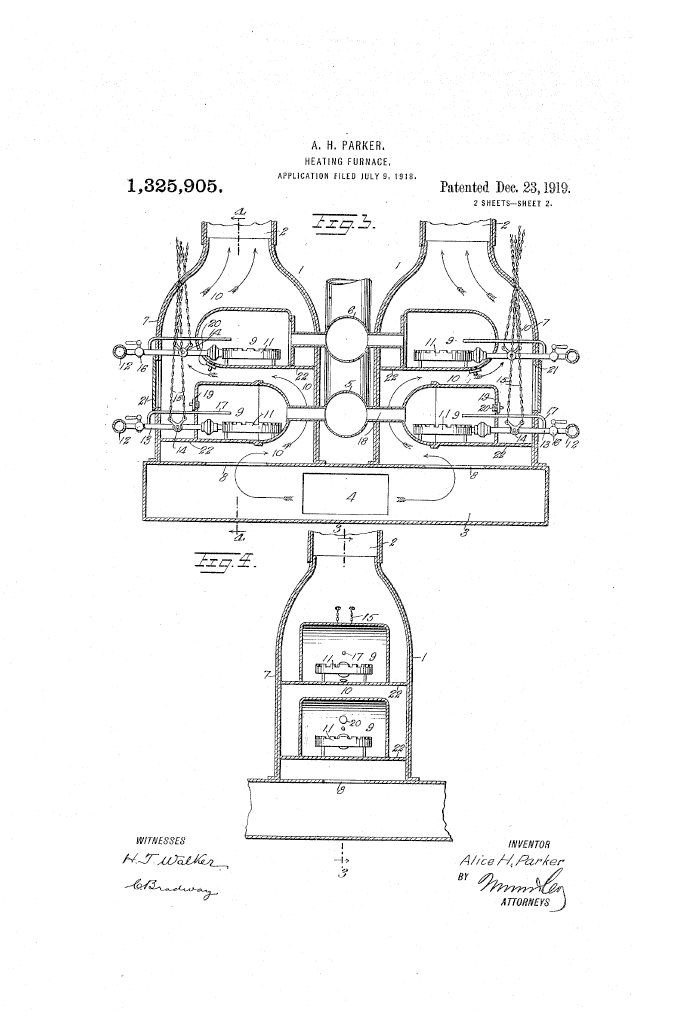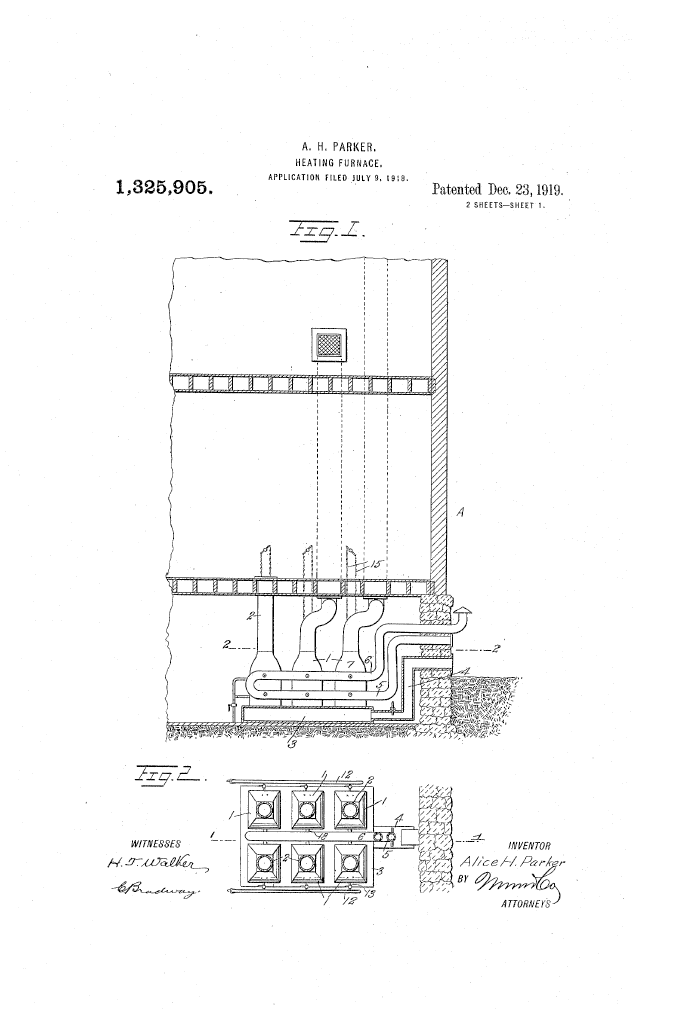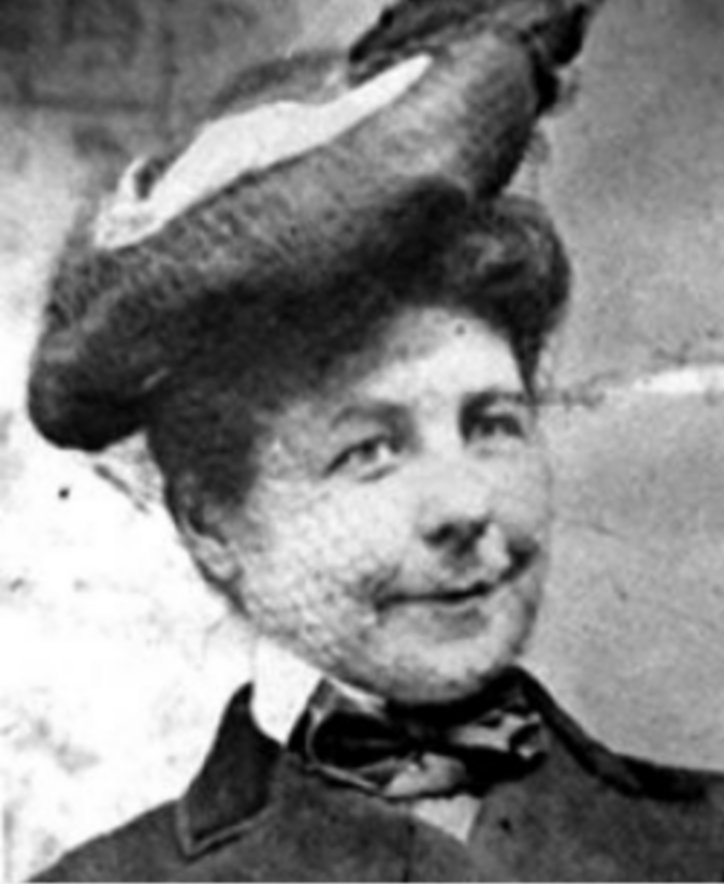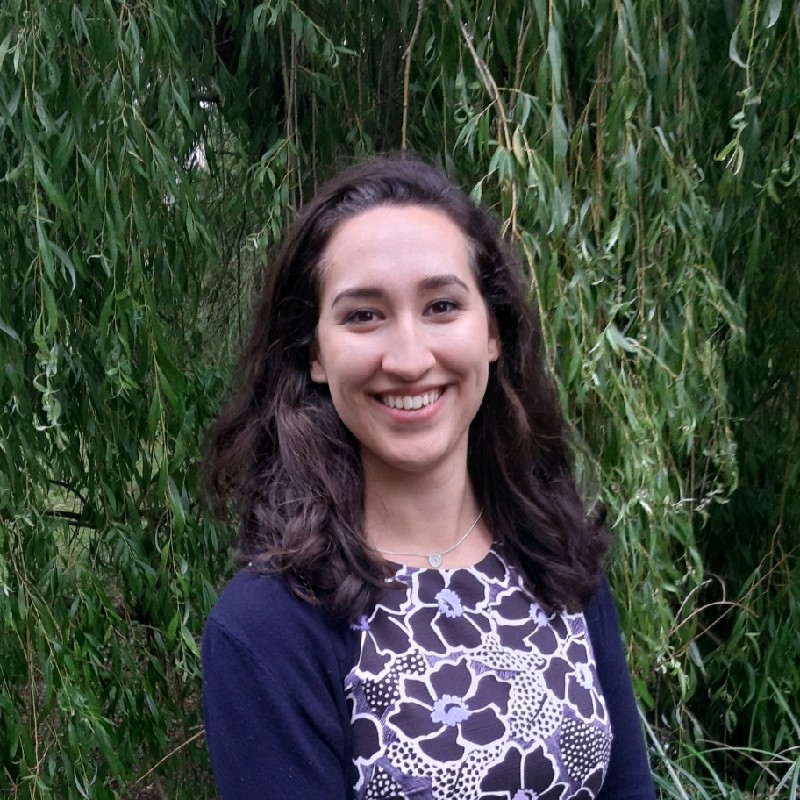International Women in Engineering Day, Part 4: An interview with Madeleine Partridge and a look back in time

For our final instalment in our Women in Engineering series, we have another four historical female engineers and a final interview with Madeleine Partridge, an R&D chemist at Afton Chemical. We hope that you have enjoyed this series of posts and have learned more about how women have helped to shape the world of engineering, and are still helping to shape it today and into the future.
The work and inventions of the four historical figures we have picked this week are as varied as they could possibly be, ranging from the invention of central heating to an invention that forms the basis for Bluetooth and Wi-Fi technologies of today. These inventions, along with those shown in previous posts, highlight how influential and critically important women have been in the history of engineering.
If you would like to skip to the interview, click here.
Hertha Ayrton

Born in April 1854, Hertha Ayrton was first introduced to the world of science and mathematics by her cousins, whose parents ran a school in northwest London which Hertha was invited to attend. Throughout her education, Hertha was supported and coached by leading physicists and luminaries of her age, going on to study at Girton College, Cambridge. Whilst there, Hertha would construct a blood pressure meter, formed a mathematical club, and even founded the Girton Fire Brigade!
However, Hertha’s greatest achievements were in her work on electrical arcs. After attending classes on electricity at Finsbury Technical College, Hertha would go on to draft numerous articles and papers about the tendency for electrical arc lamps (the main form of public lighting in the late 19th century) to flicker and the process through which this happened. Her work was so influential, she would go on to win an award from the Royal Society and be the first woman ever admitted to the Institution of Electrical Engineers (the next woman would only be admitted in 1958!). Hertha was truly a gigantic figure in the electrical engineering world, with her work still being revered today.
Alice H. Parker



From light, we now go to heat, with inventor Alice Parker, who devised the first true form of central heating in 1919. Truly little is known of Parkers early personal life despite the enormity of her invention, what is known however is that she attended Howard University Academy and graduated in 1910.
During her early life in the late 19th and early 20th centuries, buildings were still generally heated by coal or wood-burning, which when compared with the other scientific advancements of this age made the application of central heating a very primitive affair. Whilst living in New Jersey, Parker noted that the fireplace simply was not effective enough at maintaining the heat in the house during the winters, and thus developed a series of ducts attached to a natural gas-powered furnace that allowed her to control the heat in each individual room of her house. Although her patented design from 1919 had a few flaws, it was infinitely more efficient at heat distribution than a fireplace and reduced the possibility of house and building fires from leaving an open flame to burn through the night. The design of modern-day thermostats and forced air furnaces can be attributed to Parker’s invention, and the filing of her patent preceded the Civil Rights and Women’s Liberation Movements in the United States, making her achievements even more impressive.
Mary Anderson

Our next historical figure is Mary Anderson, who in 1903 invented the world’s first windshield wiper! In her early life, Anderson operated a successful cattle ranch and vineyard in California and lived a comfortable life even after moving on from the ranch and moving into an apartment with her mother, sister, and brother-in-law.
It was on a winter visit to New York City in 1903 when Anderson noticed that due to falling sleet landing on the window of the trolley car she was in, the driver was struggling to safely see out of the window of the trolley. Envisioning a windshield wiper that could be operated from within the vehicle itself as opposed to having to get out and clear the window by hand, Anderson filed a patent which was granted on November 10, 1903.
At first, her design would find little success as cars were not as common as they would later become, the Ford Model A not even being made yet by the time of her design. However, as time passed and the viability and popularity of cars grew, her design would be co-opted by major automobile manufactures, Cadillac being the first in 1922. Despite this, the original 17-year patent that had been awarded to Anderson had expired by this time, and thus unfortunately she would never see any profits from her invention. However, the fact that every car today has windshield wipers is a testament to the quality and ingenuity of her invention.
Hedy Lamarr

Our final historical figure is not only an inventor but also a famed Hollywood actress and film producer, none other than Hedy Lamarr! Best known for her roles opposite people such as Clark Gable and Spencer Tracy, Lamarr would find inspiration and love for invention from her father, who would regularly take her on walks and explain and how the various technologies found in society worked. Whilst she was a famous Hollywood actress being promoted as “the most beautiful woman in the world,” World War II broke out.
During the war, Hedy learned of radio-controlled torpedoes, and how they could be easily jammed and turned off course by the Germans. To thwart this, she worked with her friend, composer, and pianist George Antheil, to create a frequency-hopping signal that could not be tracked or jammed.
Whilst she credited Antheil with most of the actual construction of the invention, Lamarr was instrumental in helping to creatively develop the idea. Although the invention was hard to implement and was originally not picked up by the Navy, by the time of the Cuban Missile Crisis in 1962, an updated form of their design was installed into Navy ships. The invention would go on to have even further importance, as the type of spread-spectrum technique used in Lamarr’s design was incorporated into Bluetooth and wi-fi technologies which help connect our world together!
Madeleine Partridge

For our final interview, we spoke with Madeleine Partridge, a University of York graduate and an R&D Chemist at Afton Chemical. Having studied Chemistry at University, Madeleine completed her master’s degree whilst working for Afton, and since then she has been in the formulation team there for 5 years.
Like many, Madeleine didn’t always know she would follow a career in STEM. But she does fondly remember having conversations and discussions with her parents about their experiences. Her father would tell her about projects he was working on, explaining how his team researched projects.
Keep reading to find out exactly what her parents did, and how early education could be critical for younger students to gain more insight and interest in the industry.
When did you start becoming interested in STEM subjects?
I was always better at math and science subjects at high school than other topics such as History and Geography. I liked how chemistry and biology applied to the real world.
Both of my parents have a background in science. My dad is a biochemist, and my mum is a chemical engineer, so I’ve always been able to talk about science at home. When I’ve thought about what subjects I’m interested in, I knew I had more of an analytical mind, so I gravitated towards this when I started choosing subjects at GCSE or A-levels.
I’ve always found it exciting and, even though I’m a chemist, I still find biological things and physics really fascinating. So, overall, I’d say the intrigue started when I was 16 at A-levels.
Were there any teachers that influenced you?
Yeah, my maths teacher was amazing. They still stand out as the best teachers that I had. I think Maths is easily one of those subjects where you either love it or hate it – you’re typically right or wrong. People can get frustrated if they are not able to answer questions correctly. But I had teachers who would really help you understand it, they were great. My science teachers were good, the biology teachers were really nice, but these maths teachers just always stuck with me. If anything, they pushed me more towards science than my other teachers.
But I’d never been in an environment where teachers and professors were enthusiastic about chemistry before starting University. We had a couple of outstanding teachers and lecturers who were very active in the industry; they promoted teaching chemistry to such a broad audience. Their enthusiasm rubs off on you!
What sort of projects do you work on?

I formulate new oil additives; this can involve understanding how to overcome an industry problem. For example, sometimes I work with equipment manufacturers in the industrial area, so industrial lubricants for hydraulic, gas and steam turbines. Working close to manufacturers is really interesting. Sometimes I’m a bit out of my depth because I don’t have a heavy engineering background. I’m just like, “Can you just explain this… just one more time” but they don’t have a heavy chemical background usually, so between the two of us, we get through it and get the job done!
It’s nice, it’s interesting, and it always amazes me. I work with many people from Germany and France, and we will have technical conversations. Now, I don’t speak any other languages, but they will be talking about technical aspects in fluent English.
What are some of your most significant achievements?
There’s a lot of people who have been in the industry a lot longer than I have. I generally think that the number of projects I work on and their size is quite an achievement since I’ve only been in the company in my current job for 5 years. Mainly because I didn’t do a PhD, there was a question of what element of my job may be catching up to that standard, but because I did my master’s project, I got a bit of a head start. Also, Afton is filled with really lovely people who will take their time to explain stuff to you, so if you get stuck, everyone will help.
What does a typical day look like for you?
The first thing is checking emails; there is quite a global team, so people from the US will send emails overnight. Then I spend my day doing lots of data analyses. If I’m in the office, then I try and get down to the lab. We also have big mechanical teams, so I’ll try to down there and look at test parts. Depending on the day, sometimes it’s just getting my head down and doing some actual research, project planning; it’s a lot of managing my time. Some other days, it’s lots of meetings. Team meetings, peer reviews, helping each other out or checking in for projects, all that kind of stuff.

What are some of the misconceptions about being a female engineer?
It’s hard. I know what some of the misconceptions are, but I personally haven’t experienced these. People think women are overly emotional and, for some reason, aren’t held at such high calibre as a scientist. Especially in the oil industry, it’s leading in having women in the industry. The president in Bracknell is a woman, my manager is a woman, the team is roughly 50-50. However, it’s not abnormal to sit in on customer meetings where their group will all be men. I imagine some industries are worse than others, but I’ve not personally experienced any issues.
I was pretty lucky actually because of the timing I went to University. At the time, they were doing a massive drive to promote women in chemistry. Because it was one of those subjects where it wasn’t abnormal to have 80% of the class to be men, York really had the drive to encourage more women to do science. Although, subjects like Engineering and Computer Science were still behind. Still, computers are practically running the world right now, so it’s a pretty good industry to be in!
Studies have shown that the media can influence the choices of young people when they are thinking about their later lives and careers. Do you think that engineers could or should look to the media to engage with young people and promote careers in engineering?
It should be done with care. There’s a lot of Hollywood stereotypes you can get with the scientist characters. One of the programs I loved from a science perspective was CSI – I was obsessed. There are some great female characters in that show that pushed women in science. I don’t think people in my position should be different from how a male scientist would be portrayed on TV. There’s no reason for female characters to be wearing heels and a dress in a lab.
Is Tribology something that everyone should know about?
They don’t need to know about it in detail, but they should know what it is because it’s everywhere! At school, for example, in Maths or physics, you learn about friction, so by association, you should be taught what Tribology is as a word. Even if you don’t have to learn the details about it. Until I came to Afton, I never knew anything about Tribology – still, to this day, it’s a bit of mystery, but I at least know a lot more.
Do you think that the role chemicals and lubricants play in everyday life should be highlighted more in schools? And that real-world examples should play a more prominent role? Pupils do learn about friction at school and do learn about chemical reactions. Still, the practical applications of chemistry and how they link to physics are not always explored.

Chemistry is quite like maths. Still, you don’t always know about the applications, which is what I found interesting. The industry has been around for ages, so there’s no reason why there couldn’t be some aspects of it at secondary schools. Even if it wasn’t examinable, then maybe show examples of applications, real-world examples of science, and cross-functional science like physics and chemistry, followed by Tribology. I’m a chemist, but I don’t only use chemistry.
When I first said I was going to do chemistry at University, people were confused and asked if I wanted to be a chemistry teacher. But there are so many life applications. There’s nothing wrong with chemistry teachers, but I personally do not have the patience for teaching! People aren’t aware of all the different avenues. People think you’re going to work for boots and become a chemist or a chemistry teacher. No – there are millions of jobs, and I don’t even know what some of them are. I talk to people in the industry and see some roles that I’m surprised was even a job!
Is there anything you wish you had been told as a young woman when you were just getting into the industry or even into working life?
I wish I knew more about what options there are in the industry. When it came to doing my degree, every year, you need to fine-tune your module choices; I’d question what applications they would be used in, and some of them are so broad. So, more awareness about what you can do with your education after the fact. I had pretty much no information on engineering and the options attached to it. I find it really interesting, and it’s something I would have considered, but I didn’t really like physics at school. But that’s not exactly representative of what engineering is. So, I ruled it out because of that. There’s simply not much awareness of the opportunities you could have if you did a STEM subject.
Especially in early education, you don’t know what you can use the STEM subjects for. You pay a lot of money to go to University. Hence, until it becomes more accessible, there will always be a drive to pick a subject that will get you a job. Until you know what those jobs are, people will struggle to choose from such a range of subjects. I’m a firm believer that at school, the syllabus doesn’t really show you exactly what the syllabus actually is; it’s just enough to pass the exam. But once you get to University, they try to apply it to real-world things. It’s hard if people don’t stick with it through high school, then they will never be able to do it at University, so it’s like a catch 22. You have all these discussions about your career. There’s not enough emphasis on what you can do with chemistry, maths, biology, or physics, or even an engineering degree. Versus if you took science and you used it in a vocational course, such as medicine or dentistry.
What would you say to young women or students today?
Read up on it – there are so many articles out now, and it’s becoming more of a hot topic. It’s becoming less of a male-dominated area, and we should be aiming for as much diversity as possible. It will be hard to change the school curriculum, so you just need to read around it, like any other career. Especially now, there’s a lot more material around than there was when I went to school.
Is there anything else you would like to say?
I don’t know if it was a subconscious reason that I chose the path I’ve chosen. But at University, where it was promoted, and at school or Afton, I don’t feel like I’ve ever been held back by being a woman. So, if it’s something you’re passionate about, then keep trying. You shouldn’t feel held back because you’re a woman.
Find out more!
If you want to learn more about any of the historic female engineers we wrote about today, please feel free to get in touch!
If you want to find out more about Madeleine Partridge then you can follow her on LinkedIn. Madeleine has kindly allowed us to share her socials:
LinkedIn: Madeleine Partridge
